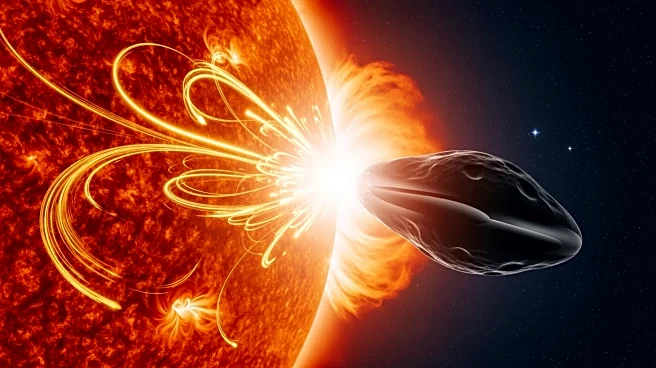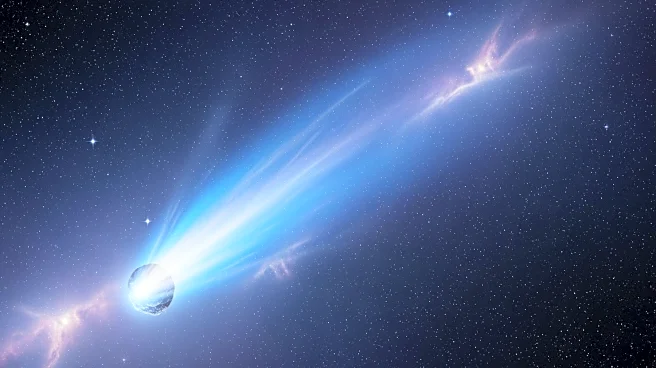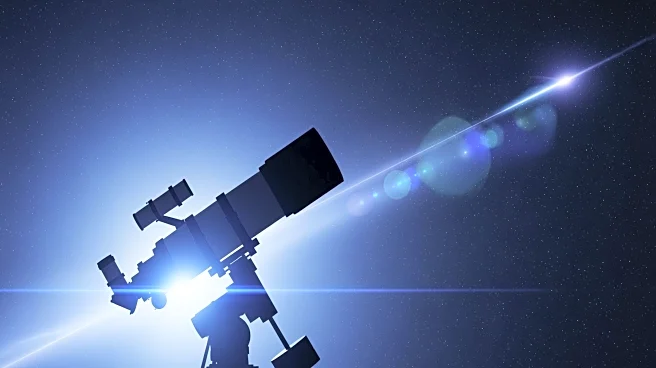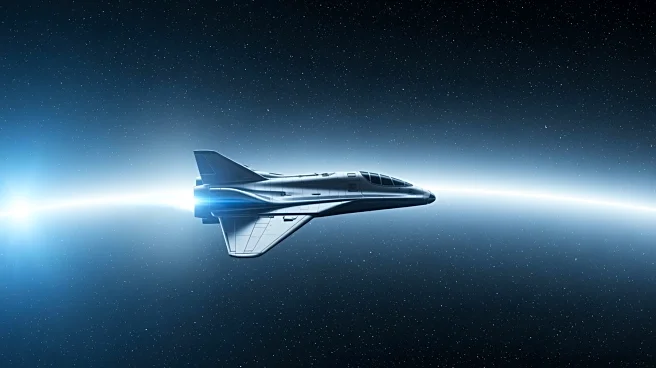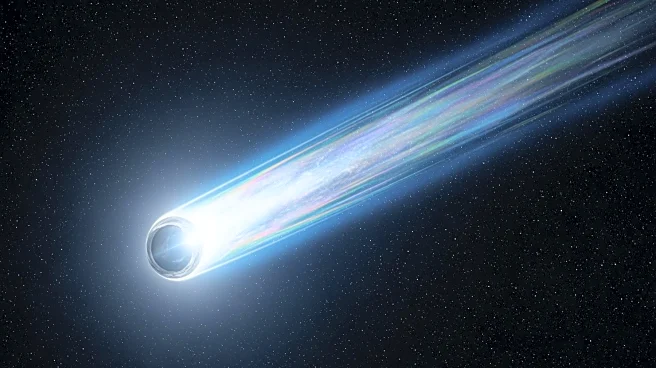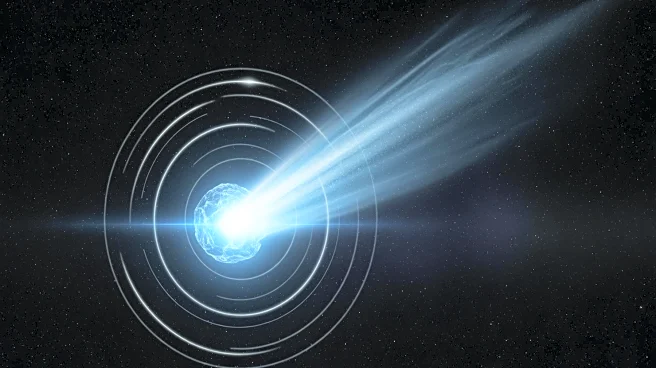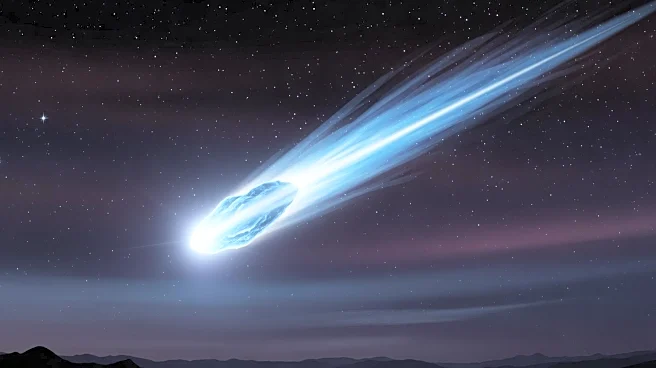What's Happening?
A rare cosmic event has occurred as a coronal mass ejection from the Sun collided with the interstellar object 3I/ATLAS. This object, discovered by the ATLAS survey in Chile, is only the third interstellar object ever
observed. The collision, following the object's closest approach to the Sun, presents a unique scientific opportunity to study its composition and origins. The interaction between the Sun's plasma cloud and 3I/ATLAS could reveal crucial information about the object's density and chemical makeup, potentially confirming or refuting theories about its nature.
Why It's Important?
This event provides an unprecedented chance to study an interstellar object under extreme conditions, offering insights into its composition and origin. The findings could enhance our understanding of interstellar phenomena and contribute to the debate over whether 3I/ATLAS is a natural comet or an 'alien craft.' The data collected may also inform future studies of similar objects, advancing our knowledge of the universe beyond our solar system.
What's Next?
Astronomers are eagerly awaiting data from the collision to analyze the object's reaction to the solar blast. Observations from powerful telescopes will help confirm its identity and composition. The scientific community is poised to determine whether 3I/ATLAS is a natural comet or something more exotic, potentially reshaping theories about interstellar objects.
Beyond the Headlines
The event has sparked discussions about the possibility of intelligent life modifying interstellar objects, highlighting the intersection of astronomy and astrobiology. The findings could influence future research on the potential for life beyond Earth and the nature of interstellar travel.
